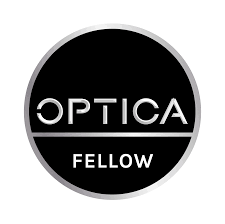Media Watch
OCBJ Insider
Orange County Business Journal -
Broadcom’s growth has helped spur the Samueli family’s philanthropic efforts in OC; their foundation’s $50M gift to UCI’s engineering school ranks No. 2 on this week’s list of Largest Charitable Gifts of 2023. Read More
The List – Charitable Gifts of 2023
Orange County Business Journal -
2023 single gift amounts
Samueli Foundation – $50,000,000
Gift will launch “Engineering+” research institutes on health, society and the environment at the Henry Samueli School of Engineering; create the Office of Inreach. Stacey Nicholas – $5,000,000
Gift will establish the Women and Engineering Program, supporting the recruitment, retention and graduation of students within the Henry Samueli School of Engineering Read More
Gift will launch “Engineering+” research institutes on health, society and the environment at the Henry Samueli School of Engineering; create the Office of Inreach. Stacey Nicholas – $5,000,000
Gift will establish the Women and Engineering Program, supporting the recruitment, retention and graduation of students within the Henry Samueli School of Engineering Read More
Some OC Beaches Are Disappearing. New Data Gives Clues On How To Help
LAist -
"If we're going to put investments into our beach, we want it to be as successful as possible and ultimately help sustain our beaches for the future," said Daniel Kahl, a UC Irvine graduate student and the lead author of the study. … "We can't save every beach," said Sanders, the UC Irvine professor. "But with this type of data, which systematically maps beach width change and suitability over large spatial extents, it can help federal and state officials see the value of projects that make sense, and also see the projects … where something else really should be considered," he said. Read More
OC Colleges, Hospitals See Focus of 2023 Donations
Philanthropy News Digest -
For the third straight year, UCI led the donor list, receiving 17 donations of $1 million or more, totaling $114 million. The school received $50 million from the Samueli Foundation to launch three new research institutes under the banner of “Engineering+” for the Henry Samueli School of Engineering. “Susan and Henry Samueli’s generous gift will establish the Engineering+ research institutes, empowering multidisciplinary teams to address key global challenges in health, society and the environment,” Magnus Egerstedt, dean of the school of engineering, told the Business Journal. Read More
Meet Optica’s 2024 Fellows
Optica -
Filippo Capolino. University of California, Irvine, USA. For fundamental contributions to optics in complex materials and exceptional points. Read More
Making Sense of the Floods in San Diego
Public Policy Institute of California -
Brett Sanders, UCI engineering professor said, “We need to better map—and communicate—flood risks, accounting for all the factors that could trigger flooding, including rainfall, streamflow, high tides and waves along the coast, and infrastructure failures. We should also talk about pre-disaster planning for post-disaster action. Do cities have a restoration plan for the day after the flood—one that aligns with community values and aspirations? The period right after a flood is often the best time to work to reduce future risk while trying to make communities whole again.” Read More
UC Irvine Engineers Unleash Innovation: Octopus-Inspired Technology Deceives And Signals
India Education Diary, -
“We are fascinated by the mechanisms underpinning the blue-ringed octopus’ ability to rapidly switch its skin markings between hidden and exposed states,” said senior co-author Alon Gorodetsky, UCI professor of chemical and biomolecular engineering. “For this project, we worked to mimic the octopus’ natural abilities with devices from unique materials we synthesized in our laboratory, and the result is an octopus-inspired deception and signaling system that is straightforward to fabricate, functions for a long time when operated continuously, and can even repair itself when damaged.” Read More
UC Irvine-Led Team Reveals Battery-Like Functions Of Mitochondria In Groundbreaking Discovery
India Education Diary -
“When we first started studying isolated mitochondria, we knew they behaved like a battery based on some work from the Tokyo Metropolitan Institute of Gerontology and UCLA, but we could not control them very well inside the cell to probe them,” said co-author Peter Burke, UCI professor of electrical engineering and computer science. “Now we can control each individual electrical component and cause it to charge and discharge.” Read More
UCI Celebrates Innovation Excellence: Two Researchers Named Fellows By The National Academy Of Inventors
India Education Diary -
The National Academy of Inventors has named two University of California, Irvine researchers as fellows. Guann-Pyng (G.P.) Li, a pioneer in the development of microelectronics for advanced health and sustainable energy applications, and David Reinkensmeyer, who combines robotics and neuroscience to create devices to help people with movement rehabilitation after neurological injury, are among 162 academic inventors made fellows by the NAI this year. Read More
‘Thousand-year storm’ floods part of San Diego, is SoCal prepared for more?
KCRW – Press Play with Madeleine Brand -
San Diego residents are still reeling from a heavy and rapid downpour that started on Monday morning. Is Southern California built to withstand storms like this? Guest: Brett Sanders - professor of civil and environmental engineering at UC Irvine, runs UCI’s Flood Lab. Read More







